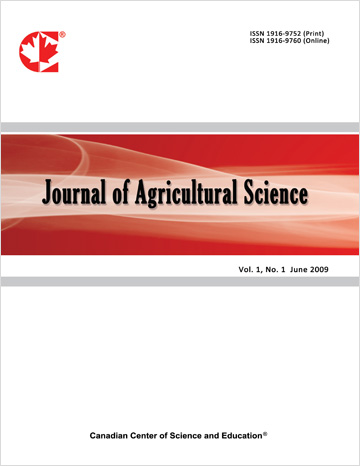Grape Production Diagnosis in the Highlands Region of the State of Espírito Santo, Brazil
- Edileuza Vital Galeano
- Cássio Vinícius de Souza
- Carlos Alberto Sangali de Mattos
- Letícia Abreu Simão
- José Aires Ventura
Abstract
Espírito Santo was the eighth largest Brazilian grape producing state and the sixth largest exporter. The objective of this study was to carry out a grape production diagnosis in the highlands region of Espírito Santo. The methodology consisted of field research in rural farms. The municipalities with the greatest participation in state grape production were selected. Field research was conducted in 2019 and 2020 in rural properties in the municipalities of Santa Teresa, Domingos Martins, Venda Nova do Imigrante, Alfredo Chaves and Vargem Alta, which are representative in production. Were interviewed 86 vinegrowers and this sample represented 13.7% of the number of grape producing centers in the State. The need to improve management practices, yield and grape quality was identified, with a focus on sustainability, reducing the use of pesticides, in addition to certification for organic/biodynamic grape production, increasing the quality of the material. It is necessary that Technical Assistance and Rural Extension (ATER) works also concentrate efforts to develop production systems with lower implementation and production costs, mainly related to the supporting structure of the vines and the development of cultivars more resistant and/or tolerant to pests and diseases, mainly vine downy mildew (Plasmopara viticola), which will consequently reduce production costs for the winegrower.
- Full Text:
 PDF
PDF
- DOI:10.5539/jas.v17n2p38
Journal Metrics
- h-index: 67
- i10-index: 839
- WJCI (2023): 0.884
- WJCI Impact Factor (2023): 0.196
Index
- AGRICOLA
- AGRIS
- BASE (Bielefeld Academic Search Engine)
- Berkeley Library
- CAB Abstracts
- ChronosHub
- CiteSeerx
- CNKI Scholar
- Copyright Clearance Center
- CrossRef
- DESY Publication Database
- DTU Library
- e-Library
- EBSCOhost
- EconPapers
- Elektronische Zeitschriftenbibliothek (EZB)
- EuroPub Database
- Excellence in Research for Australia (ERA)
- Google Scholar
- Harvard Library
- IDEAS
- iDiscover
- Jisc Library Hub Discover
- JournalTOCs
- KindCongress
- LIVIVO (ZB MED)
- LOCKSS
- Max Planck Institutes
- Mendeley
- MIAR
- Mir@bel
- NLM Catalog PubMed
- Norwegian Centre for Research Data (NSD)
- Open J-Gate
- OUCI
- PKP Open Archives Harvester
- Polska Bibliografia Naukowa
- Qualis/CAPES
- RefSeek
- RePEc
- ROAD
- ScienceOpen
- Scilit
- SCiNiTO
- Semantic Scholar
- SHERPA/RoMEO
- Southwest-German Union Catalogue
- Standard Periodical Directory
- Stanford Libraries
- SUDOC
- Swisscovery
- Technische Informationsbibliothek (TIB)
- Trove
- UCR Library
- Ulrich's
- UniCat
- Universe Digital Library
- WorldCat
- WRLC Catalog
- Zeitschriften Daten Bank (ZDB)
Contact
- Anne BrownEditorial Assistant
- jas@ccsenet.org
